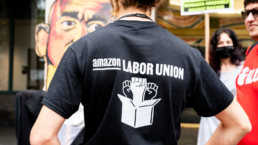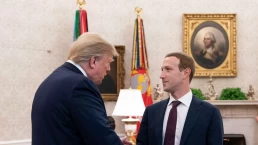Within the labor movement, all of the bright ideas and strategic insights in the world won’t amount to much if the democratic rights of union members themselves aren’t respected, restored, and expanded.
By Steve Early, Jacobin
In a recent conversation with an otherwise well-informed young labor activist, I made a passing reference to Change to Win (CTW), a national labor federation formed in 2005 by defectors from the American Federation of Labor and Congress of Industrial Organizations (AFL-CIO). “Change to what?” she asked. “Never heard of it.”

Her response was not surprising, given the short shelf life of the organizational brand in question. Launched with much media fanfare, CTW initially represented 5.5 million workers, about one-fifth of the AFL-CIO’s total membership. Its founders — the Service Employees International Union (SEIU), Teamsters, Carpenters, Laborers, United Farm Workers (UFW), United Food and Commercial Workers (UFCW), and UNITE HERE — saw themselves as the second coming of the Congress of Industrial Organizations (CIO), the rival federation created in the mid-1930s to spearhead mass organizing in that era.
To “build power for workers” seventy years later, key CTW strategists favored organizational consolidation in the form of more mergers between national unions and internal consolidation of members into larger regional or multistate locals. Labor scholar Ruth Milkman penned a New York Times opinion piece hailing CTW as “labor’s best hope — maybe its only hope — for revitalization.”
CTW did not live up to such hype. It was soon wracked by internal conflict, precipitated by then SEIU president Andy Stern’s controversial restructuring of health care locals in California and his disastrous meddling in the internal affairs of UNITE HERE. That organizing-oriented union and two other founders of CTW, UFCW and the Laborers, returned to the AFL-CIO and were welcomed back.
Recent Posts
“Arrest Now, Ask Questions Later”: Why Did L.A. ICE Agents Arrest and Jail U.S. Citizen Andrea Velez?
July 3, 2025
Take Action Now “They didn’t have vests that said ICE or anything. Their cars didn’t have license plates. … Just because of the color of our…
Trump’s Big, Beautiful Bill Is Naked Class War
July 3, 2025
Take Action Now Trump’s “Big, Beautiful Bill” trades tax cuts on millionaires for the dissolution of society.By Hamilton Nolan, In These Times…
Mayor Mamdani’s First Day, A Zero Hour Conversation With Richard Wolff
July 2, 2025
Take Action Now If elected, what would Mayor Mamdani do on his first day in City Hall? How would a democratic socialist govern as a big-city mayor?……
The U.S. Is Funding A Bloodbath At Gaza Aid Centers
July 2, 2025
Take Action Now The admin just gave $30M to GHF, the organization at the center of charges that Israel is weaponizing assistance and shooting at…




